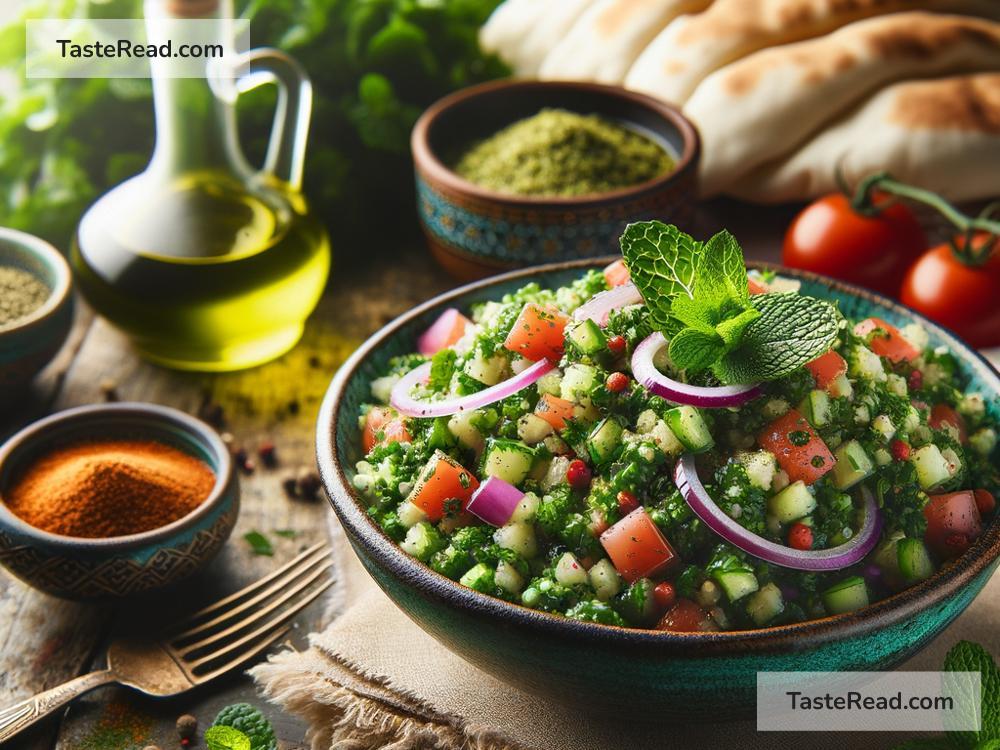The Curious Story of Mint in Middle Eastern Cuisine
Mint is a simple herb with a big personality. Its fresh, cooling taste makes it a favorite in kitchens all over the world, especially in the Middle East. The story of mint in Middle Eastern cooking is fascinating—it’s a tale of history, culture, and delicious flavors. From ancient empires to modern family kitchens, mint has been at the table for thousands of years, adding a special touch to meals, drinks, and desserts.
Ancient Roots
Mint has been around for a long, long time. It’s believed to have originated in the Mediterranean region, which includes the Middle East. The ancient Egyptians used mint not just in their food but also for medicinal purposes. They cherished its refreshing scent and believed it could ease stomach troubles.
The ancient Greeks and Romans also loved mint. They planted it in their gardens, cooked with it, and even made perfumes and bathing oils from its fragrant leaves. As trade routes developed between the Middle East, Europe, and Asia, mint spread far and wide. Cultures swapped spices, herbs, and recipes, making mint a key ingredient in many traditions.
A Perfect Fit for Middle Eastern Cuisine
Middle Eastern cooking is all about balance. It mixes sweet, sour, salty, and spicy flavors to create dishes that are exciting yet comforting. Mint fits perfectly into this approach. Its cool, refreshing taste can brighten up rich, hearty meals. It adds life to roasted meats, soups, rice dishes, and salads.
One of the best-loved Middle Eastern dishes that showcases mint is tabbouleh. This fresh salad made with parsley, bulgur wheat, tomatoes, and lemon juice often includes chopped mint. The mint’s brightness makes every bite feel summery and light.
Mint is also used in yogurt-based sauces and dips like tzatziki (popular in Lebanon and Greece) or mast-o-khiar (an Iranian staple). These creamy, tangy sauces are perfect alongside spicy grilled meats, and the mint adds a refreshing twist that balances out the flavors.
Another Middle Eastern classic where mint shines is dolma, stuffed grape leaves filled with rice, herbs, and sometimes meat. Mint adds a subtle layer of complexity to this beloved dish, complementing the tangy flavor of the grape leaves.
Mint in Beverages
Middle Eastern cuisine is also famous for its refreshing drinks, and many of them rely on mint to deliver their signature cooling effect. One of the most popular drinks is mint tea, often served hot and sweet. Drinking mint tea isn’t just about quenching thirst—it’s a social tradition. In countries like Morocco and Iran, serving tea to guests is a sign of hospitality and friendship.
Another beloved drink is lemonade with mint, a Middle Eastern favorite during the hot summer months. Fresh mint leaves are blended into the lemonade, creating a drink that’s both tangy and refreshing. It’s a simple treat that feels like a vacation in a glass.
Mint and Health
Part of the reason mint has remained so popular is its health benefits. For centuries, people in the Middle East have used mint not only for its flavor but also for its healing properties. Mint is known to aid digestion, relieve headaches, and even ease stress. In traditional Middle Eastern medicine, mint was used in herbal remedies to treat colds, coughs, and stomachaches.
Even today, mint tea is often the go-to drink when someone feels under the weather. Its soothing qualities make it a comforting choice, and the antioxidants in mint make it a healthy addition to any diet.
Mint in Modern Kitchens
Today, mint is still a big player in Middle Eastern cooking. In fact, it may be more popular than ever. Modern chefs are finding creative new ways to use this ancient herb. From mint-infused oils to mint-spiked desserts, the possibilities are endless.
Mint has also traveled far from its Middle Eastern roots. It’s found in cuisines all over the world, from Indian chutneys to British mint sauces for lamb. But when you taste mint in Middle Eastern dishes, you’re experiencing centuries of tradition and culture.
A Symbol of Hospitality
In Middle Eastern culture, food is more than just sustenance—it’s a way to connect with others. Mint, with its bright and welcoming flavor, plays a special role in this. Whether it’s in a cup of tea or a beautifully prepared meal, mint is a symbol of hospitality. It turns simple dishes into something memorable, reminding guests that they are cared for and welcomed.
Conclusion
The story of mint in Middle Eastern cuisine is one of adaptation, creativity, and tradition. From its ancient beginnings to its place in modern kitchens, mint has always been more than just a humble herb. It’s an ingredient that carries history and culture in its fragrant leaves.
Next time you enjoy a dish or drink that features mint, think about the journey it has taken to reach your table. Whether it’s in a warm tea, a fresh salad, or a creamy dip, mint invites us to slow down, savor the moment, and connect with the rich, delicious traditions of the Middle East.


